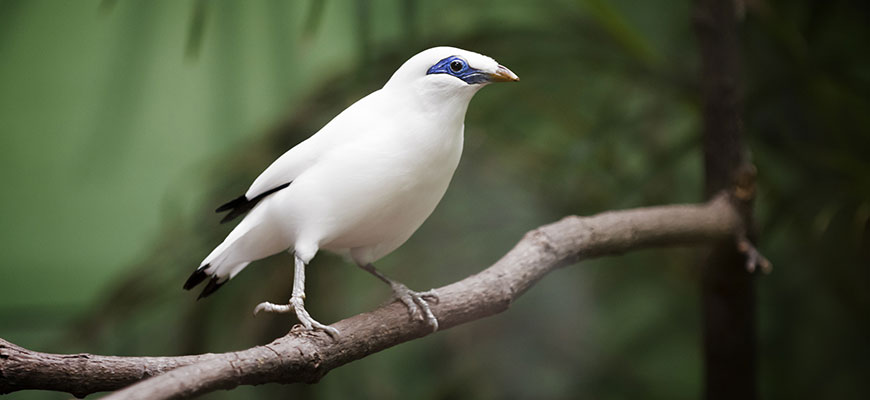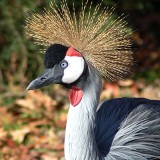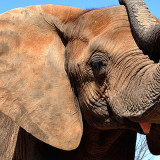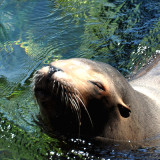CLASSIFICATION
Order: Passeriformes
Family: Sturnidae
Genus: Leucopsar
Species: rothschildi
RANGE
Only found on the island of Bali in Indonesia.
HABITAT
Mountain regions on the northern coast of Bali. Bali Mynas typically stay high off of the ground in treetops to avoid predators.
SIZE
Length: 9-10 inches
Weight: 2-4 ounces
LIFE EXPECTANCY
Wild: 7-8 years
Captivity: 12-25 years
REPRODUCTION
- Courtship displays are often similar to territorial displays in that the male bird will puff his chest, fan his tail feathers, point his bill and crest upwards and make vocalizations such as hissing and whistling.
- Builds cup-shaped nests using grass, small leaves and even feathers in tree holes.
- Reproduce from November to April.
- Known to have 2-3 clutches during this time with each having 2-3 eggs.
- Both the mother and father will incubate and care for the young.
- Chicks fledge between 12-28 days but will remain with parents for another few weeks.
DIET
Wild: Primarily insects (grasshoppers, termites, ants, etc.) but will also eat fruits, nectar, seeds and small reptiles
BEHAVIOR
They are known to congregate in flocks of 20-40 birds before they break off into pairs for the mating season. Once mated, they are known to be quite territorial to other birds, even chasing them away from their nests. Because of the small number of these birds left in the wild and being concentrated to a small area, not much is known about them aside from studies done in zoo settings.
POINTS OF INTEREST
- They are the only endemic vertebrate species to the island of Bali.
- They are featured on the Indonesian 200 rupiah coin.
- Often seen as a status symbol, Bali Mynas are poached in their native land to be sold as pets, contributing to the continuous decline of the already low population in the wild.
- Part of the starling family.
STATUS
Critically endangered. Currently their are approximately only 100 left in the wild. Many factors contribute to the decline of this species including increased tourism to the island of Bali and coinciding habitat loss, as well as illegal pet trade and poaching. Many services have been put in place to create captive breeding programs locally to release more birds to the population.






